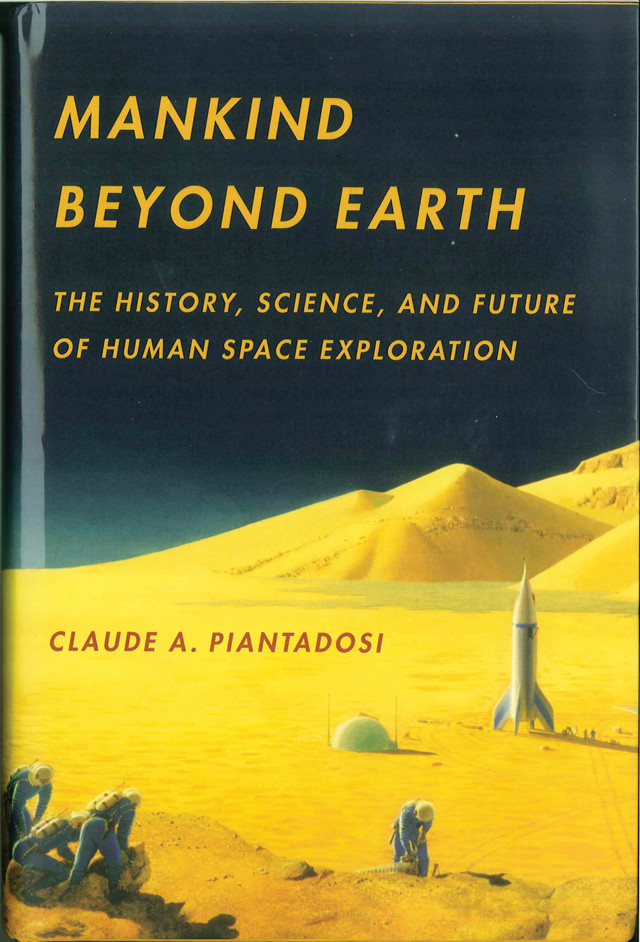
by Jacob Haqq-Misra Tuesday, August 15, 2017

"Mankind Beyond Earth: The History, Science, and Future of Human Space Exploration," Claude A. Piantadosi, Columbia University Press, 2015, ISBN-13: 978-0231162432.
Claude A. Piantadosi portrays the history and future of space exploration through the lens of space medicine, which reminds us of the many threats to the human body that await as we venture away from our planet.
This story of space exploration begins on Earth with the ambition of explorers who sought to reach the Arctic, Antarctic, or ocean depths — and returned to tell the tale. These terrestrial feats represent the use of technology to extend human survival into previously hostile territory, and they serve as the model from which the science of Environmental Control and Life Support System (ECLSS) was born. Piantadosi, a medical doctor, is an expert in undersea medicine and served as a consultant to NASA in the development of ECLSS technology. His medical background makes this book a unique perspective on the immense challenge of keeping humans alive in space.
The most basic requirement for survival is having enough air. Recycling systems on the International Space Station generate breathable oxygen through the photolysis of water while excess carbon dioxide is removed. Space agencies carefully allocate a daily allotment of oxygen and water for each explorer. Advances in technology can help to improve the efficiency of recycling systems, but inevitable leaks — through the cabin door when opening and closing or through pinhole openings along material seams — cause precious oxygen to escape into space over time.
The only way to keep explorers breathing is to provide a source of air from outside the station. Right now, transporting air by shuttle from Earth is the only solution, but harvesting local resources is a potential option for future missions. Mars holds water within its ice caps, and a Mars colony could supplement its resources by obtaining potable water and breathable oxygen from this ice. The prospect of using space resources to aid in human survival is an idea that Piantadosi discusses seriously.
He also delves into the dangers of ionizing radiation to the space traveler. Earth’s atmosphere and magnetic field protect us from radiation that space explorers must guard against. Cosmic radiation from solar and galactic sources includes atomic nuclei that travel at velocities near the speed of light and could cause both immediate and long-term damage to a space explorer’s health. Radiation damage can be mitigated somewhat through protective spacesuits and perhaps even pharmacological methods to accelerate the body’s repair of radiation damage. Yet these countermeasures may be insufficient to allow humans to travel distances as far as Mars. Piantadosi attempts to remain optimistic about the prospects of human space colonies, but admits that pragmatic radiation shielding may never be attainable.
Given the known and imminent dangers of space travel, precautions for space explorers follow the principle of ALARA, which stands for “as low as reasonably achievable.” This means acknowledging space to be a high-risk environment while also making every reasonable effort to reduce exposure. Piantadosi puts it bluntly: “A few astronauts will die early of leukemia, lung cancer and brain damage, but they chose to be astronauts, so it’s on them.” In a way, ALARA embodies the bold spirit of the brave space explorers, who fully embrace the risks at hand for a chance at a glimpse of beyond.
© 2008-2021. All rights reserved. Any copying, redistribution or retransmission of any of the contents of this service without the expressed written permission of the American Geosciences Institute is expressly prohibited. Click here for all copyright requests.